‘Adopt An Acre’ Catches Critters on Camera
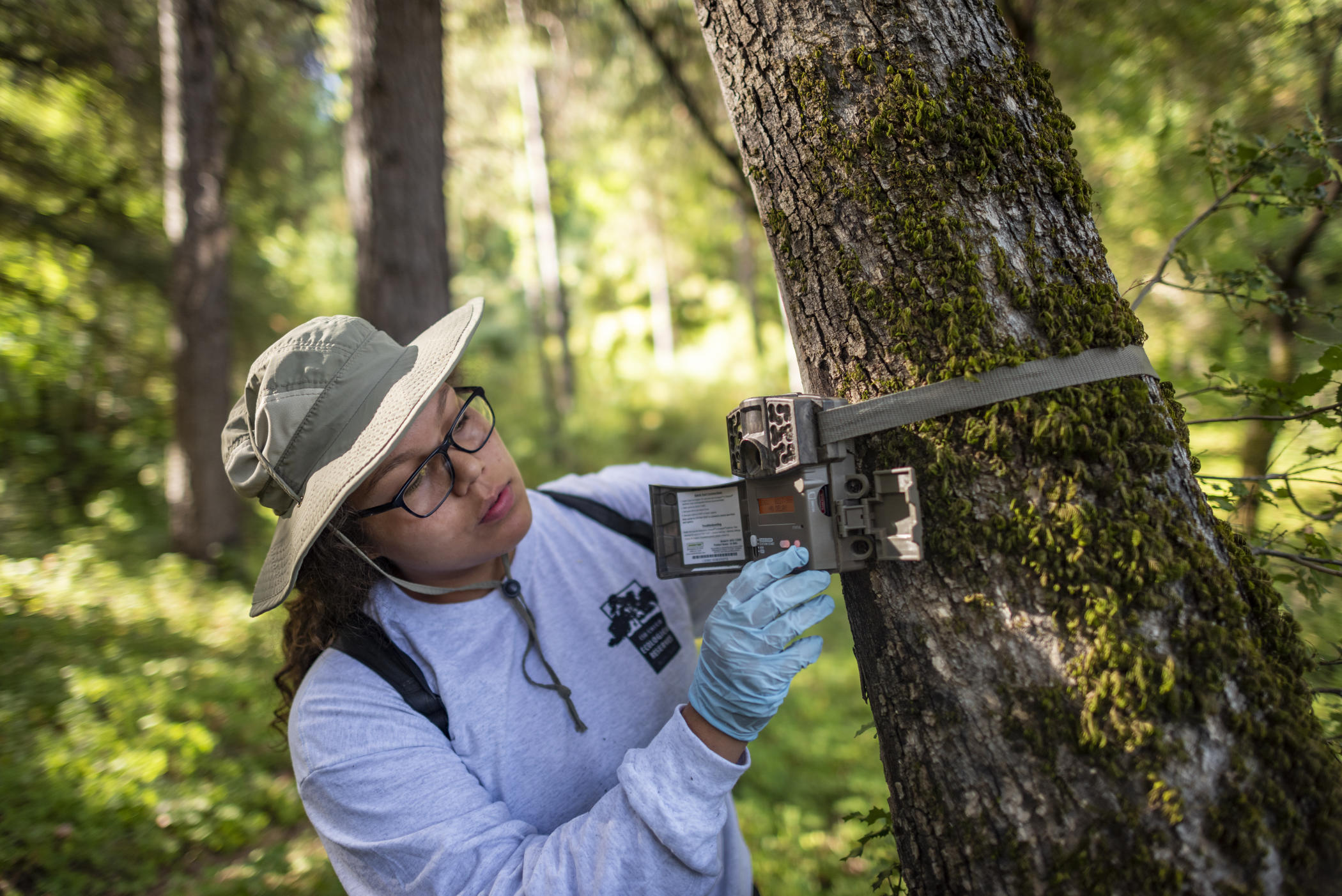
Jacklynn Rodriguez and students that work on a project to monitor the trail cams on the Adopt-An-Acre spaces up at Big Chico Creek Ecological Reserve (BCCER) as part of Chico STEM Connections Collaborative (CSC2) on Wednesday, July 10, 2019 in Chico, Calif. (Jason Halley/University Photographer/CSU Chico)
It was the most fantastic of finds.
Aylin Hernandez and Jackie Rodriguez were in their first day of scrolling through their trail camera footage, hoping a few frames might reveal sightings of wildlife calling the Big Chico Creek Ecological Reserve (BCCER) home. They readied themselves for turkeys, rabbits, and maybe a bobcat or bear if they were truly lucky.
But there it was, right on their screen—a magnificent mountain lion. The apex predator was caught mid-stride as it slinked down a narrow dirt trail choked with poison oak, wild grapevines, and oak trees.
“It was amazing. When you are doing fieldwork, you think, ‘This is what I was reading about,’” Hernandez said. “That’s pretty exciting.”
Hernandez, a senior majoring in biology, and Rodriguez, a junior environmental science major, are working with the trail cameras for a summer project through the Chico STEM Connections Collaborative (CSC2). In addition to placing and monitoring the cameras, they analyze the collected images to uncover baseline data such as what wildlife are on the reserve, which are having offspring, and their travel patterns.
The purchase and deployment of the trail cameras is made possible by the BCCER’s new Adopt an Acre campaign, which has raised more than $22,000 in annual contributions from 36 donors to date. In addition to their research applications, trail camera photos of the wildlife that cross an adopted acre are shared with donors who adopt at the program’s higher tiers and also released in the BCCER newsletters and social media, allowing more people to connect with this unique ecosystem.
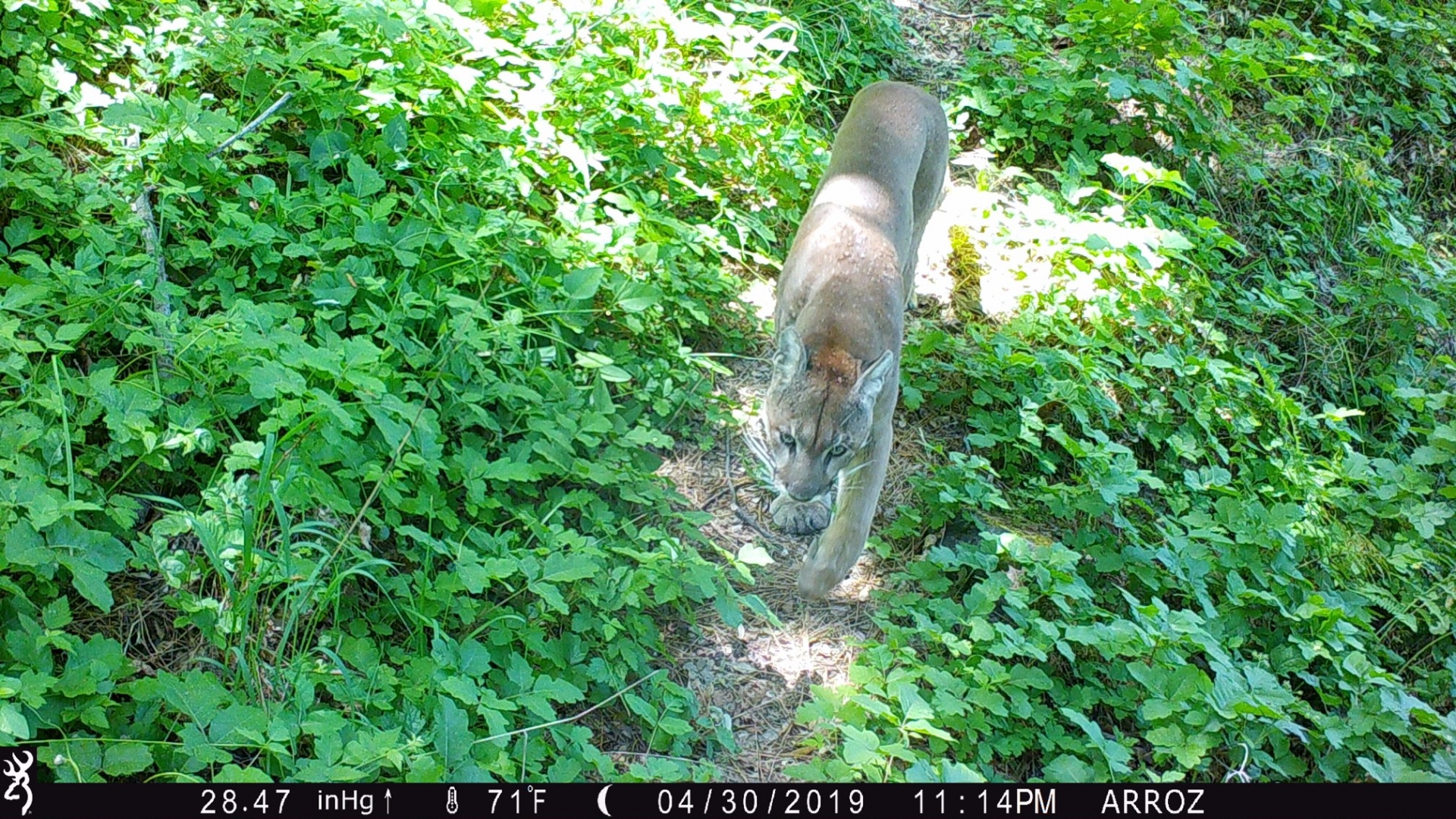
“It’s so important that they are putting the pictures out there, that they are getting other people caring about [BCCER] and seeing how cool it is and what is there,” said Courtney Silver, who adopted an acre earlier this spring. “The trail cams capture what it’s like when people are not looking.”
Silver (Biological Sciences, ’14; MS Biological Sciences, ‘17) discovered the BCCER a decade ago as an undergrad when, as a Los Angeles transplant, she heard about a natural habitat where she could take classes. The reserve would become a second home for her, an integral part of her master’s thesis on the foothill yellow-legged frogs, and a continued connection as she leaves Chico in pursuit of her PhD.
“I wanted to give back to the BCCER—and to my frogs—at least as much as it’s given me, and this was my chance. Not only do I feel like I owe BCCER, but I would like to be a reason why it stays the way it is and continues to grow,” Silver said. “Most biology students don’t get the chance to take classes in a place like that, and it’s incredible.”
On a recent Wednesday, Hernandez and Rodriguez expressed a love for their outdoor classroom as they wove through manzanita, bay laurel, and ferns, traversing trails more accustomed to traffic of the four-legged variety. Reaching their destination in a small gully, they navigated to a small box tied to a tree trunk with camouflaged strapping.
“I feel like we’ve seen every kind of animal on this camera,” said Hernandez, as she connected its memory card to her laptop and began scrolling through hundreds of images. “It’s really up to you and your intuition. We always hope we catch something cool.”
The student researchers wear gloves and wipe each camera down when they are done to ensure no human scent scares off the wildlife—or, in the case of one curious bear, becomes an attractant that could be fatal for the camera.
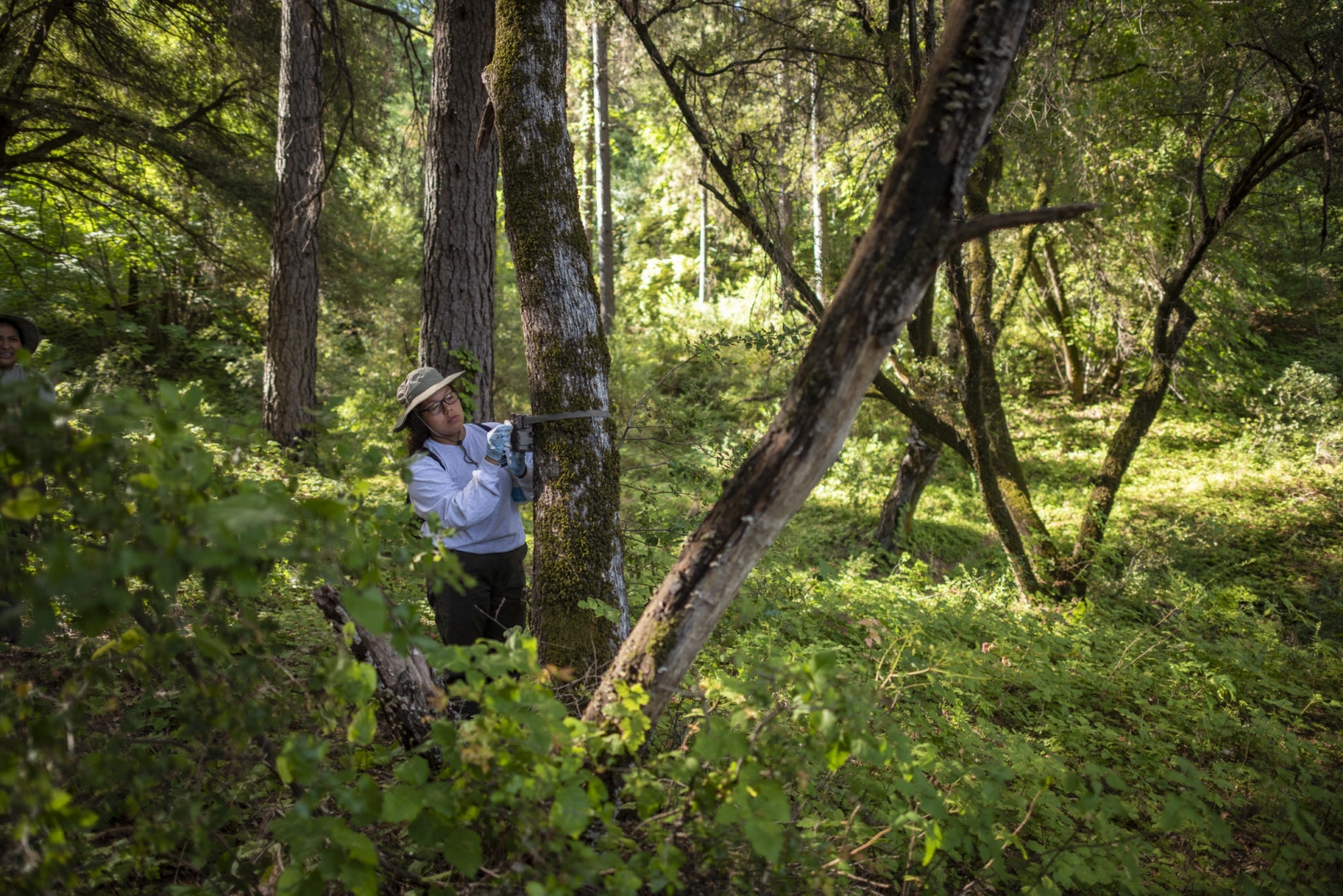
It’s a bit of an art form to place the motion-sensor cameras in ways that will capture scenes of wildlife but not generate hundreds of photos of leaves fluttering in the breeze. The students have learned how to place the cameras for maximum results, and, each week, a few images never fail to delight.
While downloading a week’s worth of data, they can see that one day at 5:20 a.m., a deer strolled past the screen or when a tall-eared jackrabbit sprinted across some grass around 6 a.m. Another day, at 6 p.m. a flock of turkeys steps slowly through a thicket of star thistle. Foxes, a bear with cubs, and birds galore have been among other recent sightings.
“I wouldn’t ever think you would have all this wildlife,” Hernandez said. “That’s why I chose Chico, because I wanted to experience nature more.”
CSC2 has flung doors wide open for both students in ways they never imagined. The program—which offers resources and opportunities to underrepresented students majoring in engineering, computer science, construction management, natural sciences, and agriculture—has wrapped them in services ranging from academic assistance and advising to professional development and undergraduate research opportunities like this trail camera project.
As women, as Latinas, and as first-generation students, both Hernandez and Rodriguez say they are proud to be forging a path in a field where these identities have typically been underrepresented.
“A lot of people in our culture don’t want to do STEM, but I think it’s because we just didn’t have opportunities and resources,” Hernandez said. “And college is really a culture shock. Not seeing a lot of minorities doing what you do is really discouraging. I didn’t feel I met anyone who looks like me who wants to do what I do.”
“We should break that stereotype,” Rodriguez added. “And that’s what I want to do.”
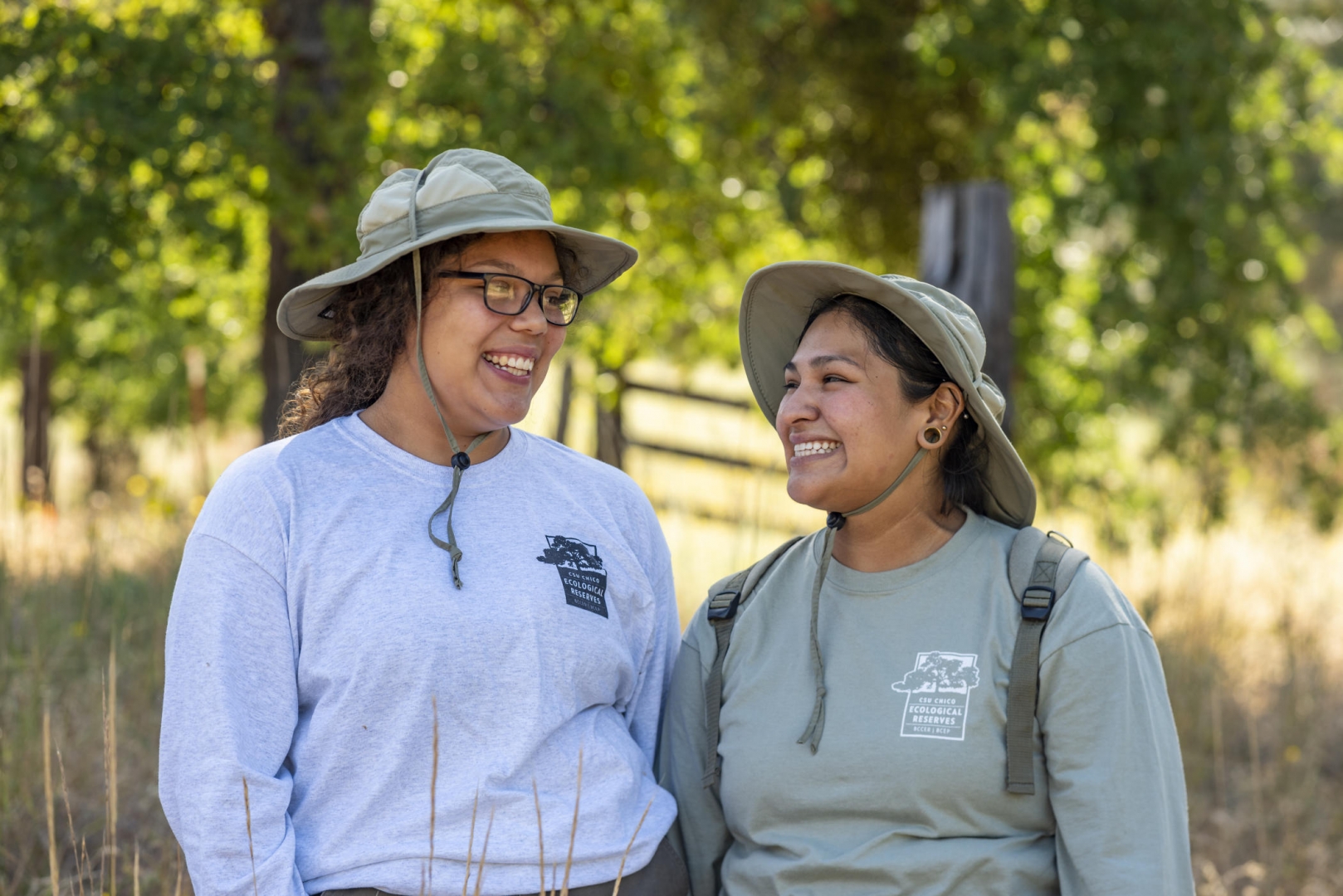
For inspiration, they look to mentors like Lorena Navarro, who has a PhD in biology and coordinates the CSC2 program for the College of Natural Sciences.
“It’s like, if she did it, wow, I can do it too,” Hernandez said.
Both students are still a bit unsure of what they want to do in their careers, but they hope whatever it is, it’s something that can make an impact in preserving the world around them.
Meanwhile, they’ve become unofficial BCCER ambassadors, bringing their friends and roommates to hike around its 3,950 acres in hopes they will experience the same thrills.
The students also are working on a Google Map of the cameras to make it easier to track and assess data, and upload all their images of wildlife to iNaturalist, a photo-sharing site by citizen scientists, to help identify particular species and generate greater awareness of the diversity at BCCER. They hope the images they share will create a broader interest in the world around us.
“I just want people to know about nature and have a better understanding of it,” Hernandez said.
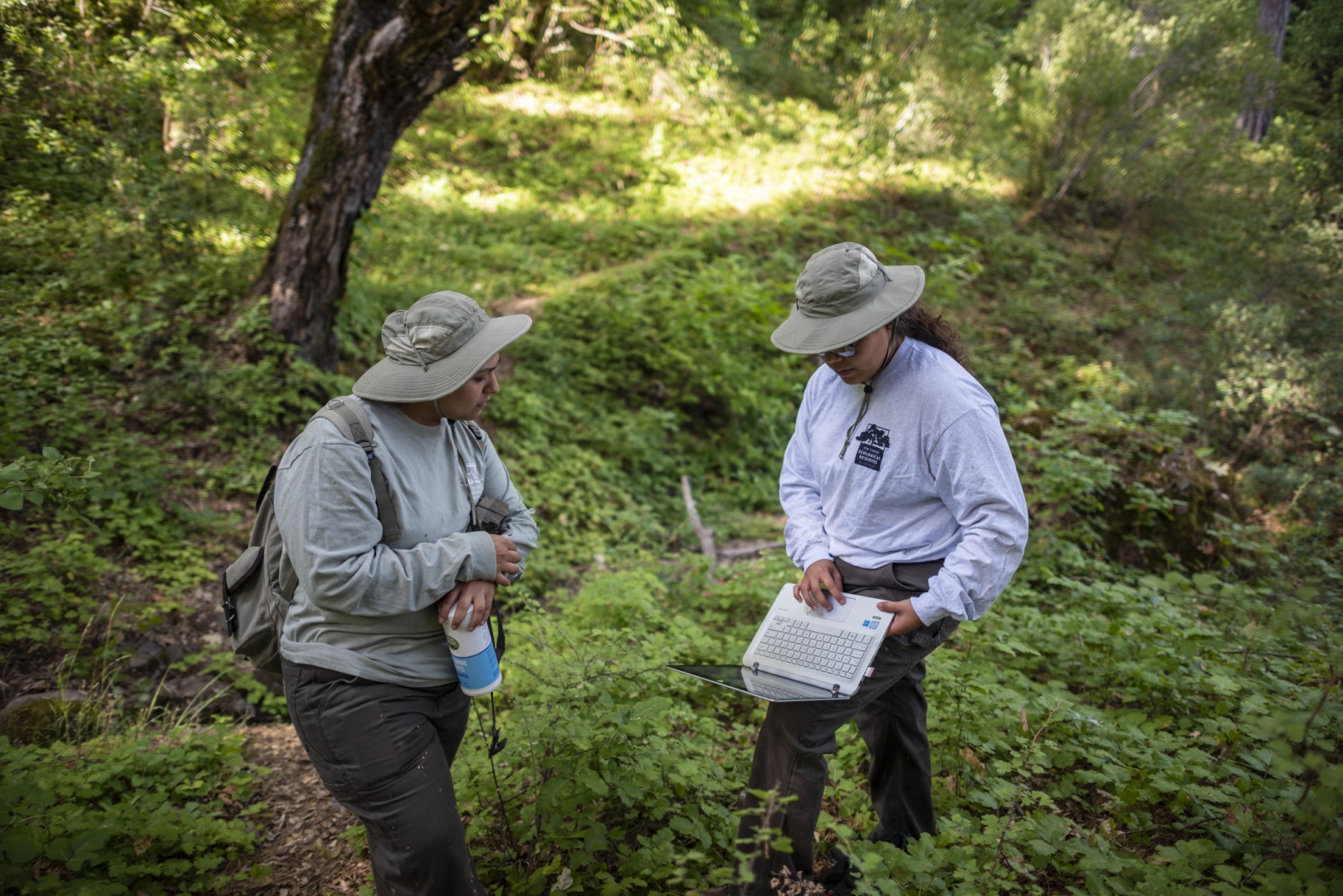
That sentiment rings true with Maggie Hill, who represents the fifth generation of her family to grow up along Big Chico Creek. She has fond memories of visiting what is now BCCER property for decades, including trips traversing the wild landscape in the family Jeep with her mother, Dorothy Morehead Hill, who is renowned for her documentation of the culture, language, and life of Northeastern California’s Native American tribes.
This year, Maggie Hill, her sister, and her nephew thought it would be a wonderful Mother’s Day gift to adopt an acre in Dorothy Morehead Hill’s memory. As a leadership-level donor, she has the chance to go on an overnight camping trip on the reserve and looks forward to bringing her nephew and his children so they too can discover its magic.
“It’s a unique piece of property. It’s relatively untouched in a millennium,” Maggie Hill said. “If people want to see what can happen with things like the Nature Conservancy and the reserve, it helps them realize what they can save for future generations.”


